This series features a molting Lyristes plebejus or Tibicen plebejus depending on who you ask.
Skip to part 2, part 3, part 4, or part 5.
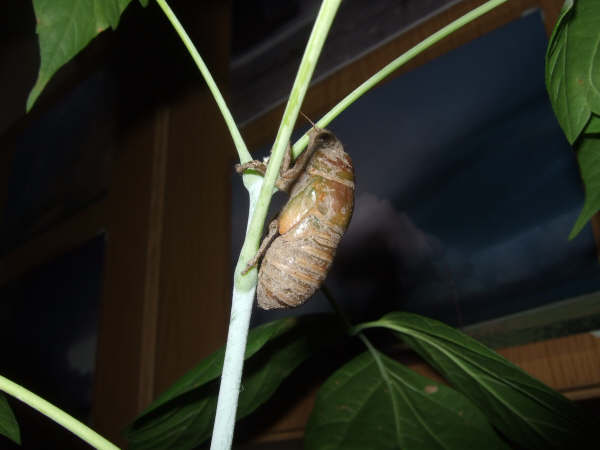
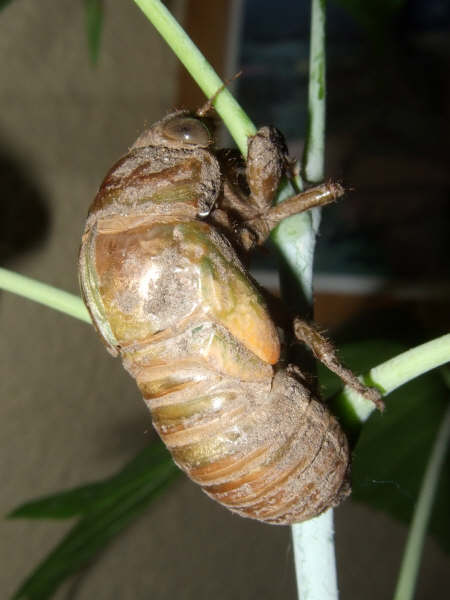
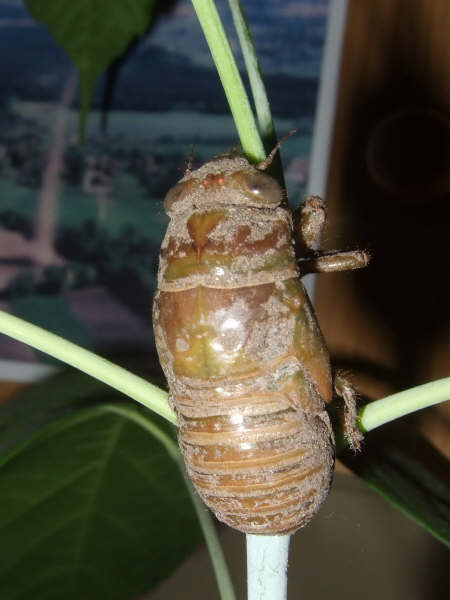
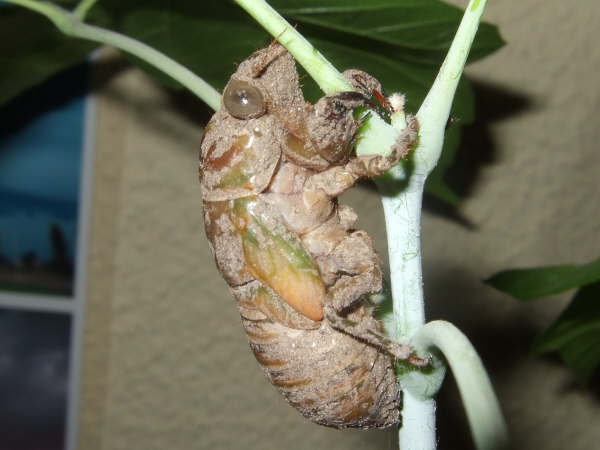
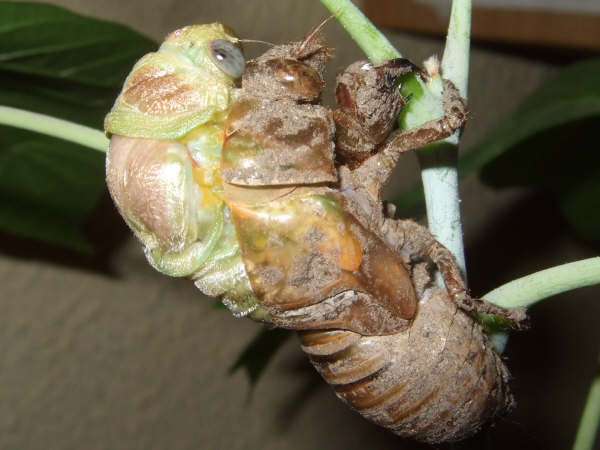
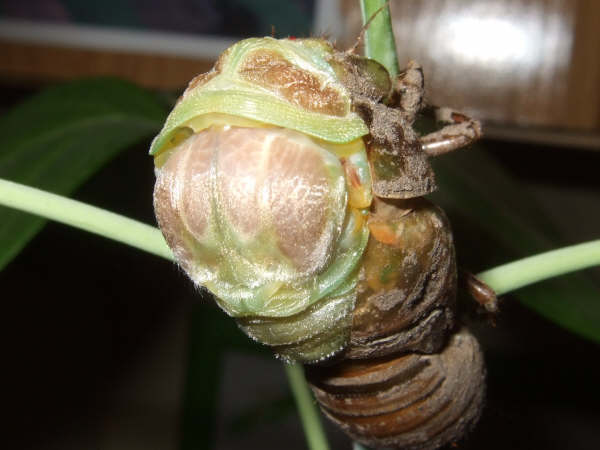
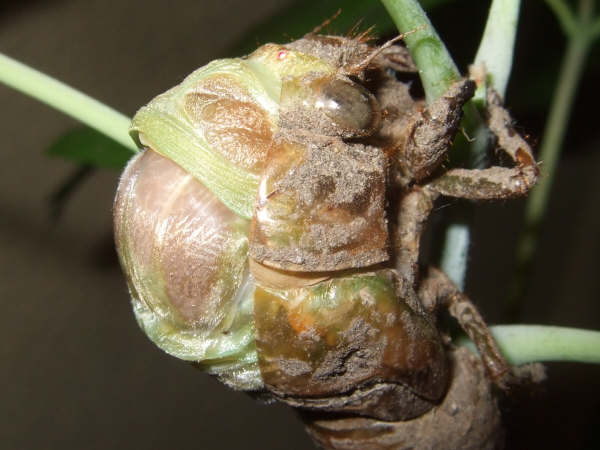
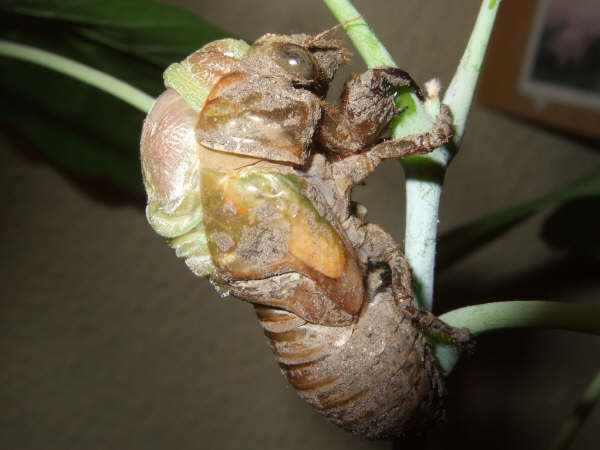
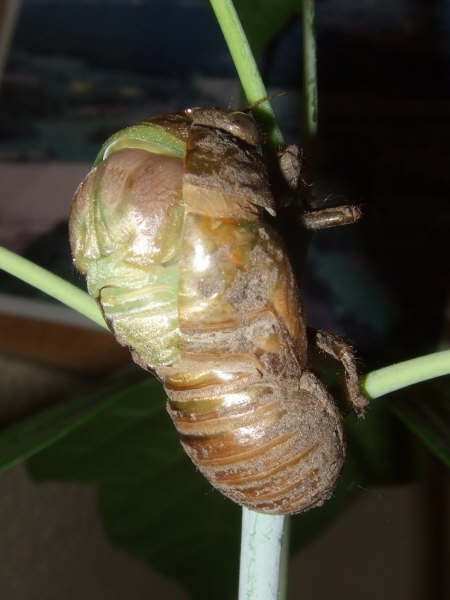
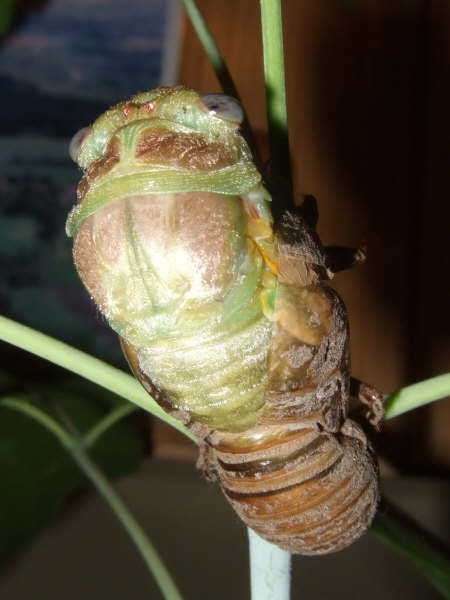
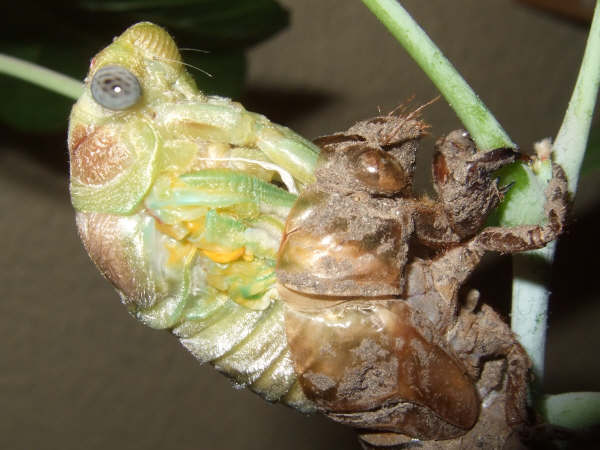
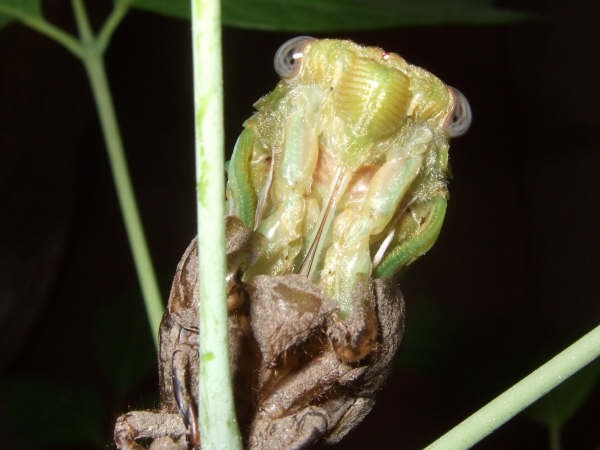
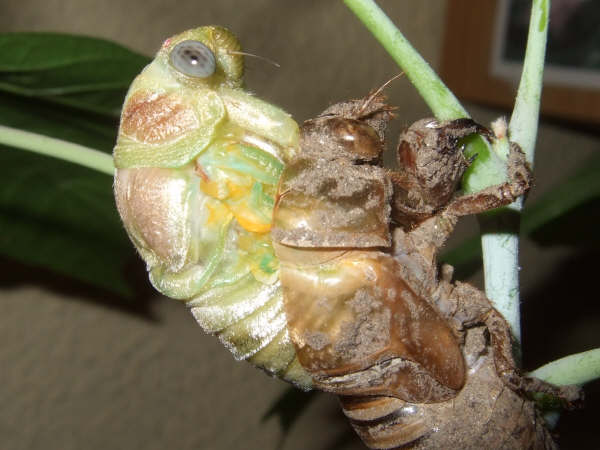
Some photos of False cicada chimneys by Santisuk Vibul. Bangkok, Thailand. 2010.
False Chimney photo by Santisuk Vibul:
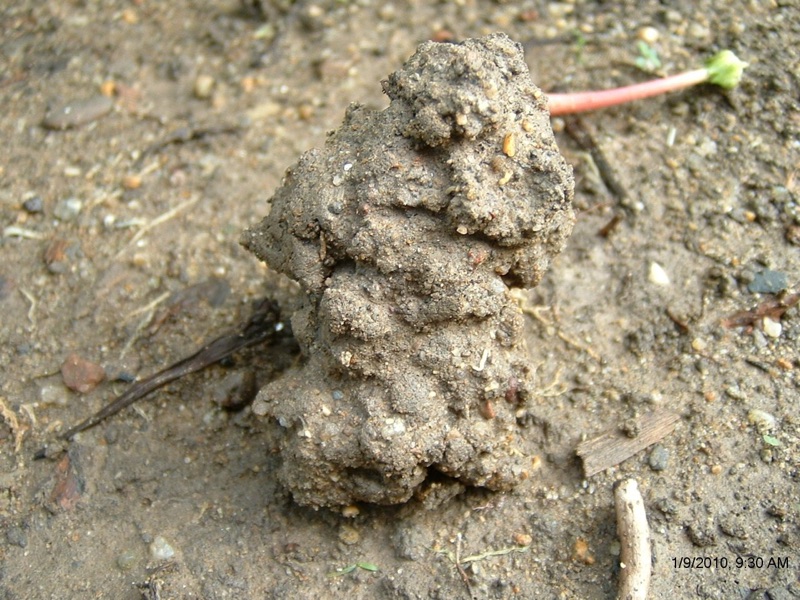
Split false chimney photo by Santisuk Vibul:
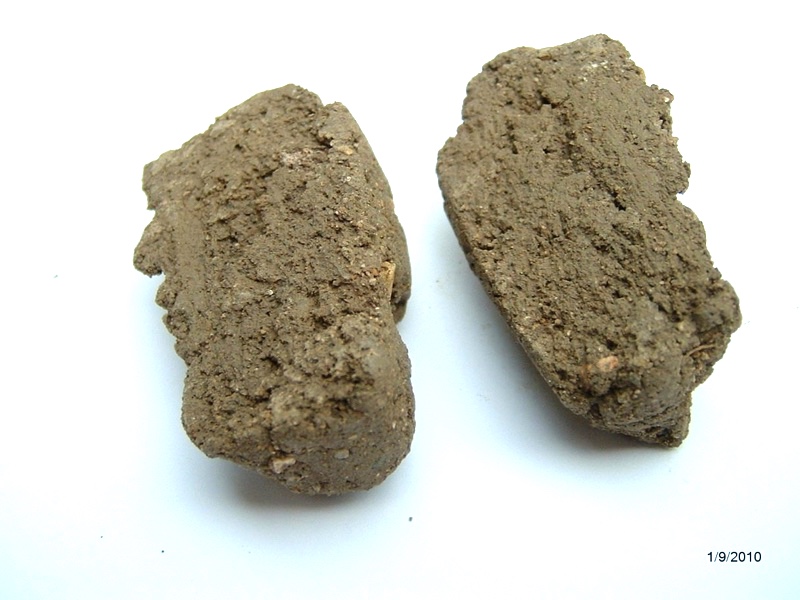
This is a series of photos of a cicada molting by Gina Scarborough taken in Florida. It appears to be a Neotibicen sp, and definitely a cicada belonging to the tribe Cryptotympanini.
The pink color is amazing. Click the photos to get to larger versions.
Nymph:
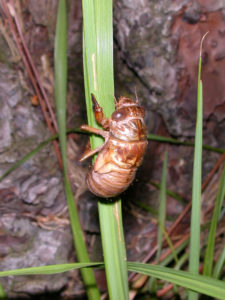
Splitting the skin:
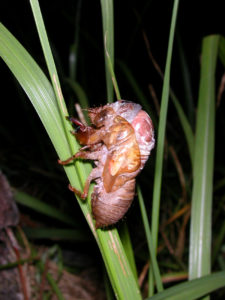
Head coming through:
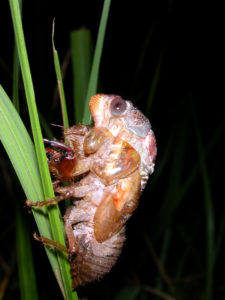
Mesonotum is out:
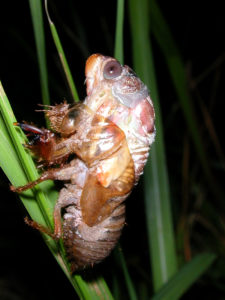
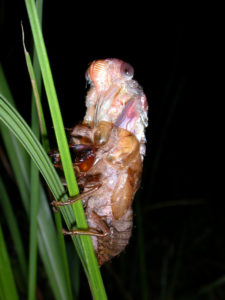
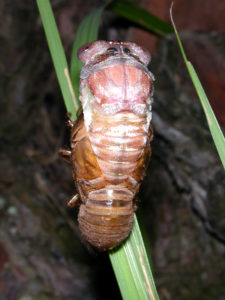
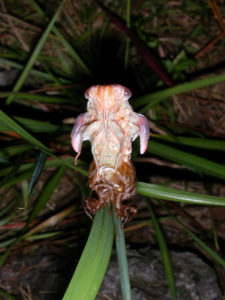
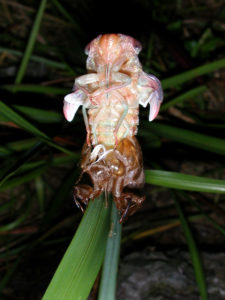
Wings start to expand:
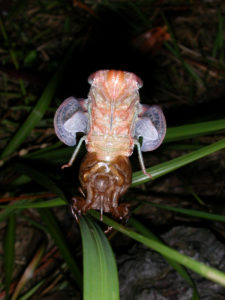
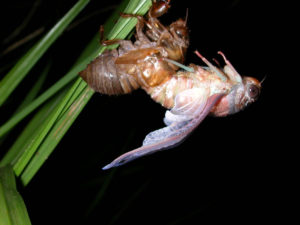
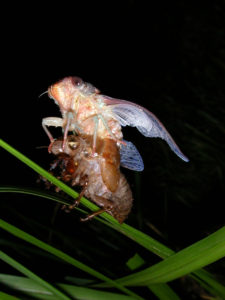
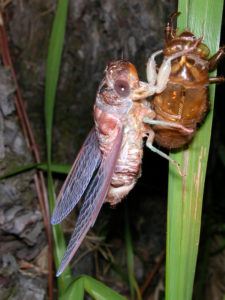
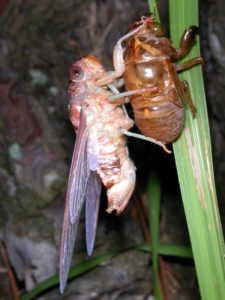
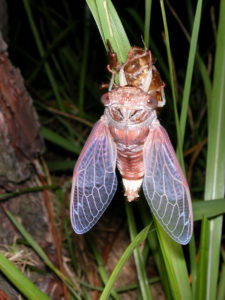
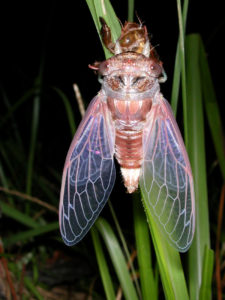
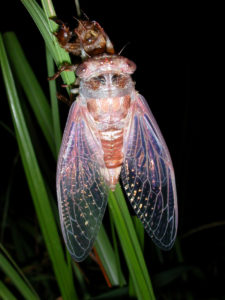
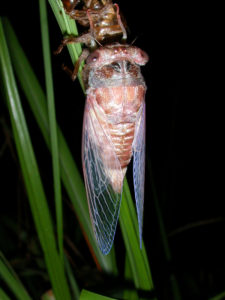
Brood X Magicicada photos by Nate Rhodes from 2004.
Recently molted Magicicada, still hanging from its nymphal skin:
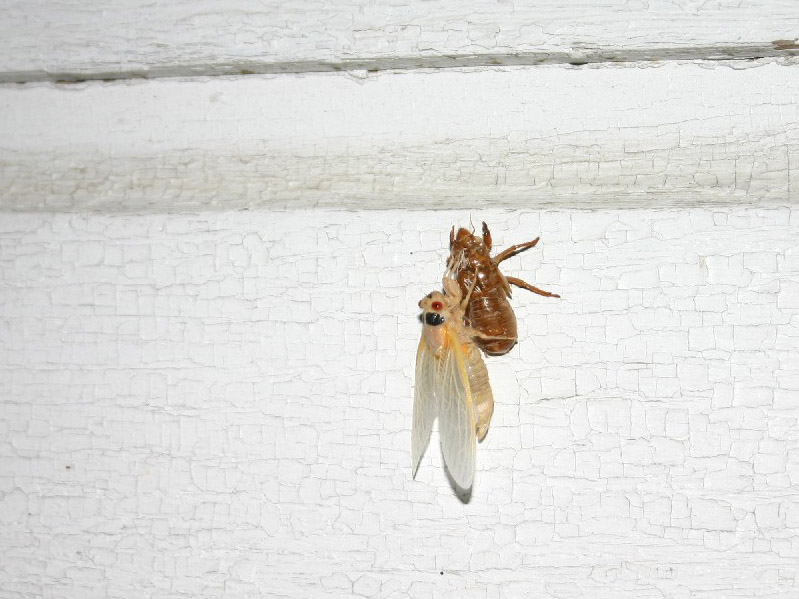
Molting Magicicada:
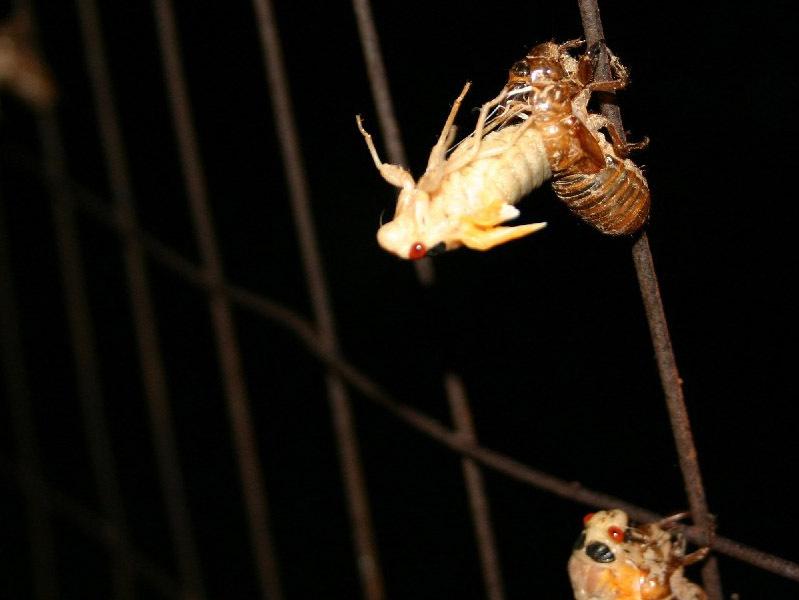
Two adult Magicicada:
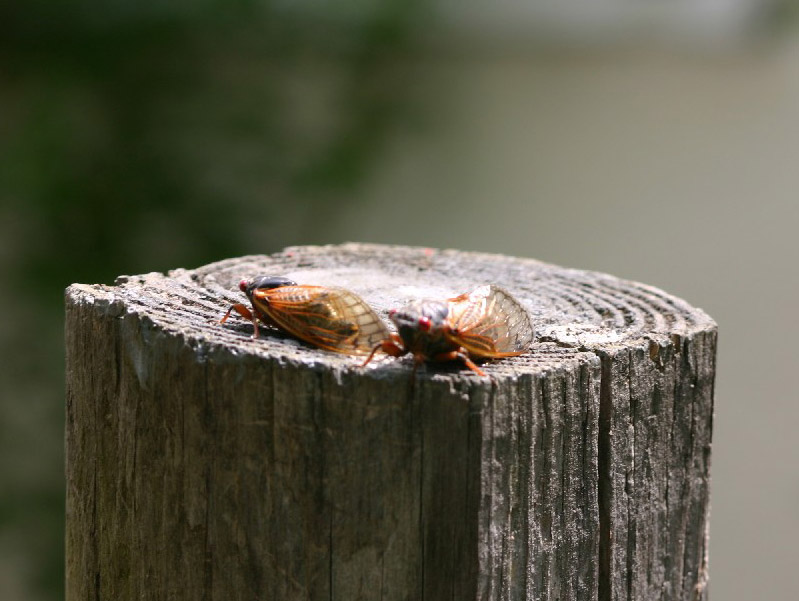
Recently molted Magicicada hanging from its nymphal skin:
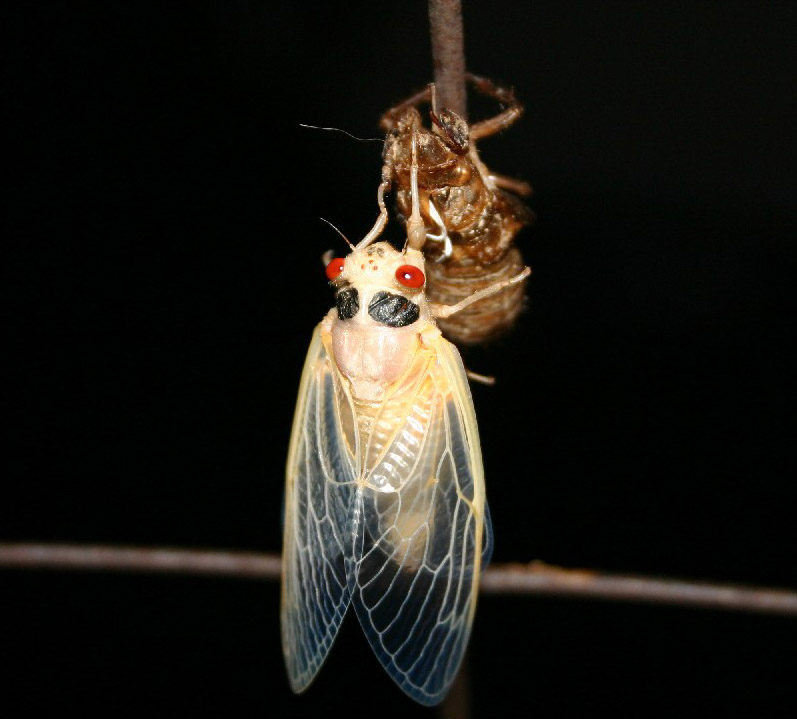
Molting Magicicada:
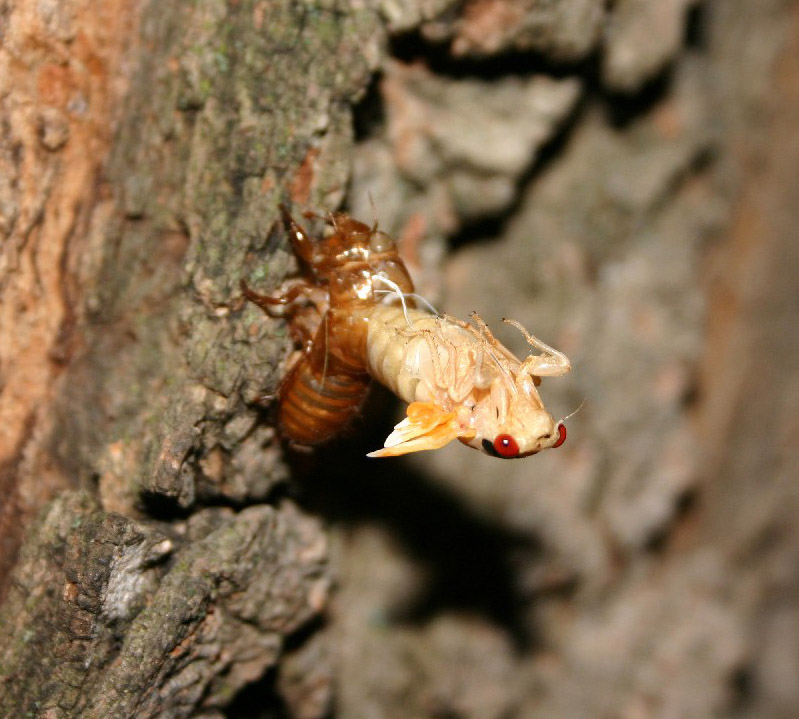
Occasionally cicadas get stuck in their nymphal skins (exuvia) during the molting process (ecdysis). The reasons why might be external forces like temperature, rain, wind, interference by other cicadas or other insects like ants, or something wrong with the cicada itself.
This is a photo sent to us by Liz G back in 2007 during Brood XIII from Peoria, Illinois.
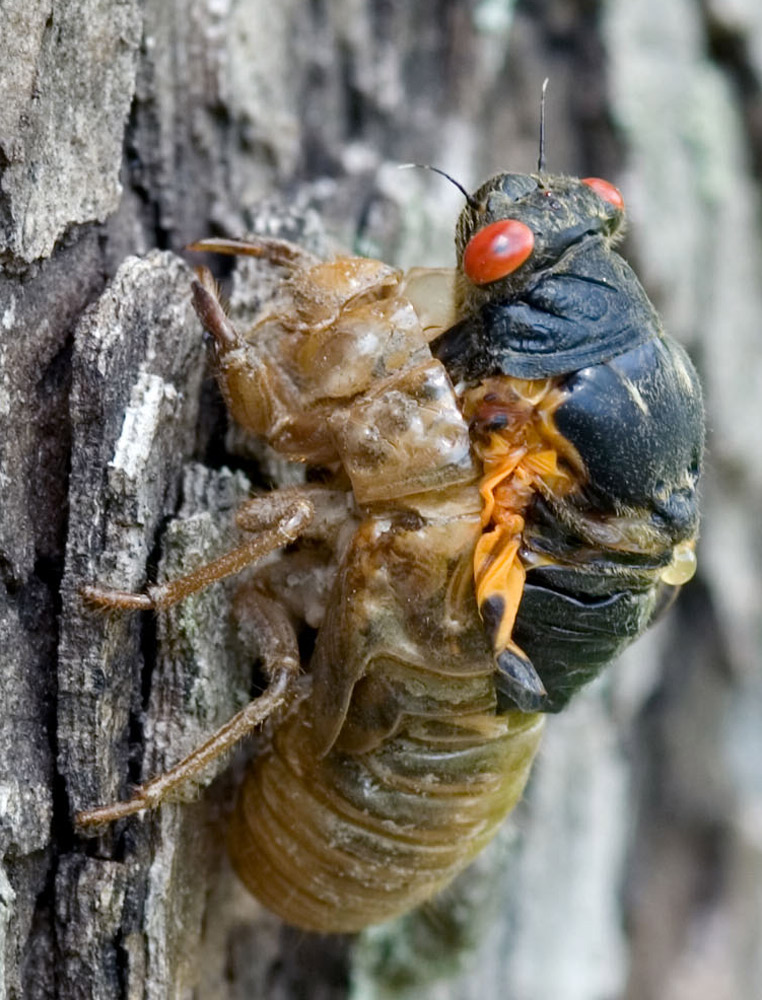
Photos of a molting or molted Neotibicen by Gerry Bunker from 2005.
Two Teneral Neotibicen photos by Roy Troutman. Teneral means soft. These cicadas have recently molted so their bodies are soft. The photos were taken in 2004, probably in Ohio.
This one looks like a Neotibicen tibicen tibicen:
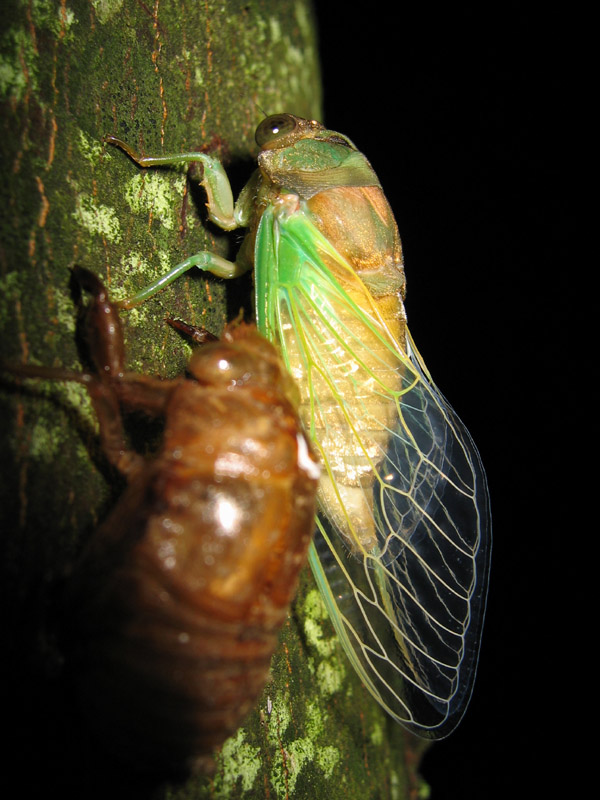
This one looks like a Neotibicen linnei or pruinosus.
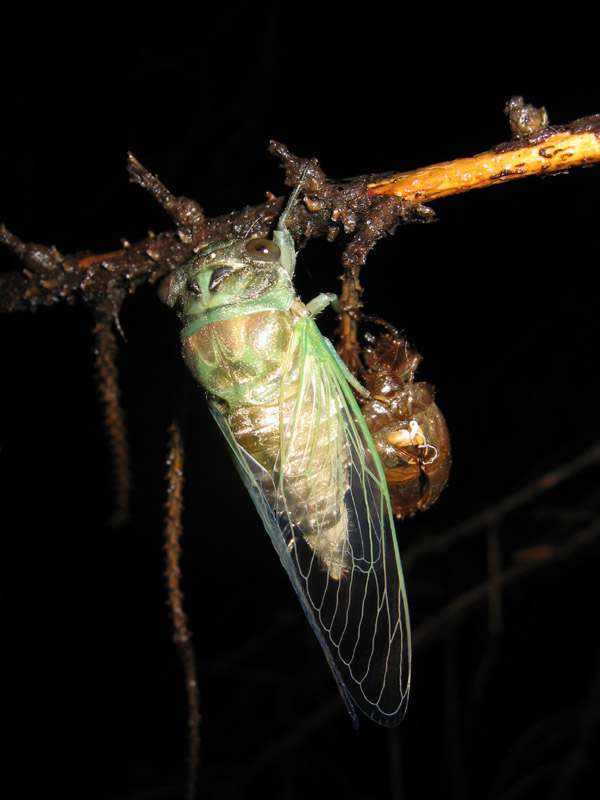
Molting Neotibicen cicada photos by Roy Troutman from 2004. Probably Ohio. Looks like a Neotibicen tibicen tibicen.
Male Neotibicen tibicen tibicen molting. Other names for this cicada include: Morning Cicada, Swamp Cicada and formerly Tibicen chloromera or chloromerus.
Click each image for larger images: